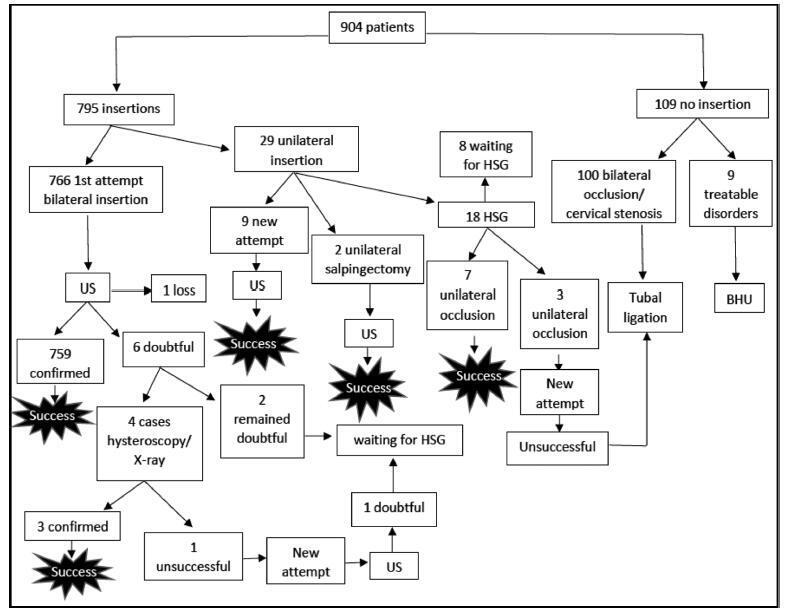Revista Brasileira de Ginecologia e Obstetrícia. 2020;42(6):325-332

To evaluate the insertion of the hysteroscopic intratubal sterilization device for female sterilization concerning the technique and the feasibility.
Retrospective study with data collection of medical records of 904 patients who underwent device insertion between January and September 2016 in a public hospital in Rio de Janeiro (Brazil) with data analysis and descriptive statistics.
In 85.8% of the cases, the uterine cavity was normal, and themost commonlydescribed findings upon hysteroscopy were synechiae (9.5%). The procedure lasted an average of 3.56minutes (range: 1 to 10minutes), and the pain was considered inexistent or mild in 58,6% of the cases, mild or moderate in 32,8%, and severe or agonizing in less than 1% (0.8%) of the cases, based on a verbal scale ranging from 0 to 10. The rate of successful insertions was of 85.0%, and successful tubal placement was achieved in 99.5% of the cases. There were no severe complications related to the procedure, but transient vasovagal reactions occurred in 5 women (0.6%).
Female sterilization performed by hysteroscopy is a safe, feasible, fast, and well-tolerated procedure. The rates of successful insertions and tubal placements were high. There were few and mild adverse effects during the procedure, and there were no severe complications on the short term.
Search
Search in:


Comments